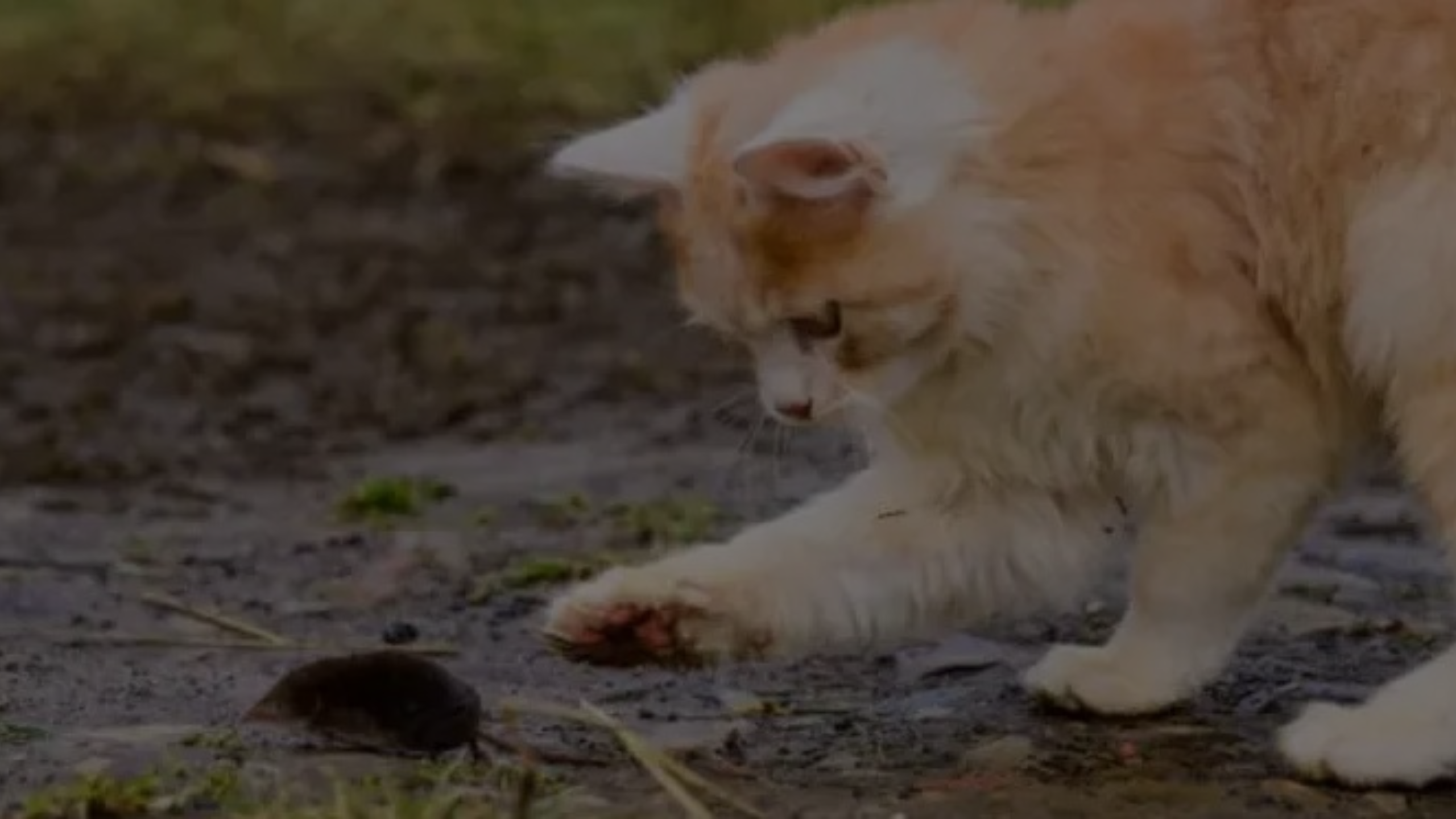Moles, with their subterranean antics and unsightly mounds, can become a thorn in the side of any gardener. And many homeowners naturally turn to their feline companions, renowned hunters with sharp senses and playful instincts, as potential mole-battling allies. But do cats kill moles? Let’s delve into the fascinating world of cat-and-mole interactions.
Do Cats Possess the Skills to Take Down Moles?
Cats certainly have the predatory drive and physical capabilities to pose a threat to moles. Their keen eyesight, sensitive hearing, and lightning-fast reflexes are honed for hunting small prey. Additionally, their flexible bodies and powerful front paws enable them to dig and unearth potential tunnel dwellers.
However, hunting moles presents unique challenges that differ from catching mice or birds.
- Moles spend most of their time underground: Cats primarily hunt above ground, relying on sight and sound to locate prey. Detecting and accessing moles living in intricate tunnel networks requires a different skill set.
- Moles are surprisingly strong and agile: Don’t underestimate these little burrowers! Moles can fight back fiercely and maneuver quickly through their tunnels, making them challenging targets for even the most skilled feline hunter.

Do Cats Kill Moles?
While cats possess the necessary skills, their success rate in catching moles varies greatly. Here’s what you need to know:
- Some cats are natural mole hunters: Certain breeds, like terriers and Siamese, have a stronger instinct for hunting underground prey. Additionally, individual cats may develop a particular interest in moles, honing their skills through experience.
- Many cats simply play with moles: Instead of delivering the final blow, some cats might be more interested in batting and pouncing on the mole as a moving toy, eventually leaving it unharmed.
- Success largely depends on the opportunity: If a mole happens to venture above ground or leave a tunnel opening exposed, a cat might seize the chance to attack. However, such opportunities are often rare.
Safety Concerns and Responsible Mole Control
Even if your cat excels at catching moles, consider these important factors:
- Moles can carry parasites: These pests can harbor diseases that could be transmitted to your cat if ingested. Consult your veterinarian about potential risks and preventive measures.
- Mole traps pose dangers: Avoid using traps around your cat, as they could get caught and injured. Opt for humane and cat-safe mole control methods.
- Focus on deterring, not eliminating: Moles play a role in the ecosystem. Instead of aiming for complete eradication, consider humane deterrents like castor oil, sonic repellents, or professional exclusion services.

Alternatives to Cats for Mole Control
Remember, cats are not guaranteed mole-busting solutions. Here are some effective alternatives:
- Habitat modification: Eliminate food sources like grubs and earthworms by improving soil drainage and aeration.
- Natural deterrents: Plant castor beans, marigolds, or garlic, whose scents repel moles.
- Mole tunnels and exclusion fencing: Professionals can create underground barriers to guide moles away from your property.
- Trapping and relocation: Hire a licensed wildlife specialist for responsible trapping and relocation if necessary.

Conclusion: Cats and Moles
While cats might exhibit impressive hunting prowess, their effectiveness in catching moles is far from assured. Consider the safety concerns, respect for wildlife, and effectiveness of alternative methods before unleashing your feline friend on a mole-hunting mission. By understanding the dynamics between these creatures and employing responsible control techniques, you can strike a balance between protecting your yard and respecting the natural world.
Resources & References
- Humane Society of the United States: https://www.humanesociety.org/news/underground-wonder
- National Wildlife Federation: https://hogarthspestcontrol.com/wildlife-services/moles/
- The National Pest Management Association: https://www.npmapestworld.org/
FAQs About Cats and Moles
Do all cats catch moles?
No, not all cats are successful mole hunters. While they have the innate predatory drive and physical capabilities, the subterranean lifestyle of moles presents unique challenges. Some breeds (terriers, Siamese) and individual cats with hunting experience might show more interest, but it’s not a universal skill.
Is it safe for my cat to hunt moles?
While rare, catching moles can carry risks for your cat. Moles can harbor parasites and transmit diseases. Ensure your cat is up-to-date on vaccinations and consult your vet about potential risks. Additionally, avoid using mole traps that could harm your cat.
Do cats eat moles?
Not always. Even if they catch a mole, some cats might play with it rather than eat it. This often depends on the individual cat’s personality and prey preference.
Are there alternatives to using cats for mole control?
Yes, several humane and effective methods exist. Habitat modification (improving drainage), natural deterrents (plants), exclusion fencing, and professional trapping/relocation are all viable options.
Can I encourage my cat to hunt moles?
It’s generally not recommended. Mole-hunting carries risks for your cat and disrupts the ecosystem. Focus on deterring moles humanely rather than relying on your cat as a pest control solution.
What if my cat keeps digging up mole tunnels?
This behavior might be driven by the instinct to hunt, curiosity, or boredom. Ensure your cat has plenty of mental and physical stimulation through toys, climbing structures, and outdoor access. Consider deterrents like motion-activated sprinklers to discourage digging near mole tunnels.







